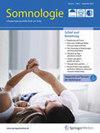夏令时是否会导致更多的心肌梗死?
IF 0.5
Q4 CLINICAL NEUROLOGY
引用次数: 1
摘要
摘要背景日光节约时间(DST)在全球70多个国家实行。在最近的过去,其假定的经济效益已经成为越来越有争议的主题,并且连同其可能对健康的负面影响,已经导致欧盟和美国决定废除夏时制。从夏时制到夏时制的过渡会破坏昼夜节律,并导致可测量的不利影响。其中,急性心肌梗死(AMI)的发生率可能因DST改变而增加。目的在现有文献的基础上,探讨DST转换与急性心肌梗死发生率之间的关系。材料与方法在MEDLINE数据库中进行系统的文献检索。研究纳入了观察从DST过渡或过渡到DST后AMI发生率的研究,并在过渡后几周或前后有一个控制期。在确定的26项研究中,有8项符合纳入标准。对结果进行了解释,重点放在方法学差异、报告发病率和亚组分析上。7项研究报告了发病率比(IRR)、观察-预期比或优势比,而1项研究仅报告了个别天数的IRR值和过渡周的统计显著性水平。6项研究报告了春季换班后发病率增加,其中4项具有统计学意义。三项研究报告称,在秋季换班后,发病率有所上升,其中两项具有统计学意义。结论:一些研究表明,春季和秋季夏令时改变后AMI发病率都增加,但结果在一定程度上仍然是矛盾的。未来的研究是有必要的,以更好地了解DST转换对健康的影响,并且发病率的量化应该控制混杂因素。本文章由计算机程序翻译,如有差异,请以英文原文为准。
Does daylight saving time lead to more myocardial infarctions?
Abstract Background Daylight saving time (DST) is practiced in over 70 countries worldwide. Its assumed economic benefits have become subject of increasing controversy in the recent past, and, together with its likely negative impacts on health, have led to the decision to abolish DST in the EU and the USA. Transitions from and to DST disrupt the circadian rhythm and lead to measurable adverse effects. Among them, the incidence of acute myocardial infarction (AMI) is suspected to increase as a consequence of DST changes. Objective The aim of this study is to examine the relationship between DST transitions and the incidence of acute myocardial infarction based on the available literature. Materials and methods A systematic literature search in the MEDLINE database was performed. Studies were included that observed the AMI incidence after transitioning from or to DST and had a control period beyond or around the post-transitional weeks. Of 26 identified studies, 8 met the inclusion criteria. Results were interpreted with an emphasis on methodological differences, reported incidence rates, and subgroup analyses. Results Seven of the identified studies reported the incidence rate ratio (IRR), observed-to-expected ratio, or odds ratio, while one study only reported IRR values for the individual days and statistical significance levels for the transition weeks. Six studies reported an increased incidence after the spring shift, four of which were statistically significant. Three studies reported an increase after the autumn shift, of which two were statistically significant. Conclusion Several studies show increased AMI incidence rates following both spring and autumn DST shifts, yet results remain in part contradictory. Future research to establish a better understanding of the health implications of DST transitions is warranted, and the quantification of incidence rates should control for confounding factors.
求助全文
通过发布文献求助,成功后即可免费获取论文全文。
去求助
来源期刊

Somnologie
CLINICAL NEUROLOGY-
CiteScore
2.10
自引率
28.60%
发文量
47
期刊介绍:
Die Zeitschrift Somnologie ist das offizielle Organ der Deutschen Gesellschaft für Schlafforschung und Schlafmedizin (DGSM), der Österreichischen Gesellschaft für Schlafmedizin und Schlafforschung (ÖGSM) und der Schweizerischen Gesellschaft für Schlafforschung, Schlafmedizin und Chronobiologie (SGSSC).
Auf der Basis von aktuellen, klinisch relevanten Forschungsergebnissen befasst sich die Somnologie mit der Ätiologie, Pathophysiologie, Differentialdiagnostik und Therapie der verschiedenen Schlafstörungen. Eine wissenschaftlich hochqualifizierte Analyse der Ätiologie, Pathophysiologie, Epidemiologie, Diagnose und Therapie verschiedener Schlafstörungen erfordert die Kooperation einer Vielzahl von medizinischen Fachdisziplinen. Durch die Zusammenarbeit von Vertretern aus den Bereichen der Epidemiologie, Humangenetik, HNO, Mund-, Kiefer- und Gesichtschirurgie, Innere Medizin, Pneumologie, Kardiologie, Gastroenterologie, Neurologie, Neurophysiologie, Physiologie, Psychologie, Pädiatrie und Pharmakologie erfüllt die Somnologie die multidisziplinären Anforderungen der Schlafforschung und Schlafmedizin. Besonderes Augenmerk liegt hierbei auch auf methodischen Neuerungen der Biomedizinischen Technik. Neben experimentellen oder klinischen Originalarbeiten und Übersichtsarbeiten werden Empfehlungen, Positionspapiere und Leitlinien der DGSM publiziert. Regelmäßig erscheinende Schwerpunktthemen und die Einrichtung einer CME-Rubrik in der Somnologie erfüllen den Aus- und Weiterbildungsanspruch dieser Zeitschrift und der beteiligten Fachgesellschaften.Auf eine ausgewogene Kombination von wissenschaftlichen Inhalten und praxisnahen Inhalten, die der Aus- und Weiterbildung dienen, wird bei der Zusammenstellung der einzelnen Ausgaben Wert gelegt. Based on current, clinically relevant research results, the journal Somnologie focuses on the etiology, pathophysiology, differential diagnostics and treatment of various sleep disorders.A scientific, comprehensive analysis of the various causes of sleep disorders requires the cooperation of several branches of medicine. Through the collaboration of specialists in the areas of epidemiology, human genetics, ENT, OMF, internal medicine, pneumology, cardiology, gastroenterology, neurology, neurophysiology, physiology, psychology, pediatrics, and pharmacology, Somnologie fulfills the multidisciplinary requirements of sleep research and sleep medicine. Special attention is paid to methodological innovations of biomedical engineering.In addition to experimental and original clinical articles, reviews, case reports, recommendations and guidelines of the DGSM are published. Focus issues and and CME-articles fulfill the continuing education requirements of this journal and the involved professional societies.A balanced combination of scientific content and articles fostering education in sleep medicine is provided in each single issue of Somnologie.
 求助内容:
求助内容: 应助结果提醒方式:
应助结果提醒方式:


